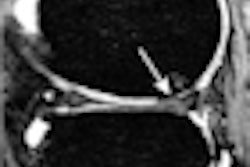
NEW YORK (Reuters Health), June 30 - Salvage radiation therapy effectively treats local failure following high-intensity focused ultrasound (HIFU) treatment for localized prostate cancer, according to a study published online on June 11 in European Urology.
The French research team reports a five-year progression-free survival rate of 72.5% following salvage external-beam radiation therapy. Additional toxicity was generally mild, although erectile dysfunction worsened.
"In multivariate analysis, PSA nadir post-(salvage radiation therapy) with a threshold at 0.2 ng/mL and time to achieve this nadir were both significant predictors of failure," the authors write.
Recent studies have shown HIFU failure rates of up to 44% (see Reuters Health stories of May 7, 2010, and October 15, 2009). Senior author Dr. Gilles Pasticier, from Hopital Universitaire Pellegrin, Bordeaux, and associates previously reported results of a small study indicating that radiation therapy is a feasible option for these patients, although they recommend this modality only for patients with histologically proven local relapse.
Their current study included 100 patients with histologically proven localized disease (no extraprostatic disease) after one or two HIFU sessions. All received conformal treatment with a median dose of 72 Gy, and 17 also received androgen-deprivation therapy.
During mean follow-up of 39.4 months (range 5-164), treatment failure occurred in 15 of the 83 patients treated exclusively with radiotherapy. Ten patients died, including one due to prostate cancer.
Prostate specific antigen nadir following radiation was 0.78 ng/mL in the failure group and 0.07 ng/mL in those who didn't fail treatment.
According to Dr. Pasticier's group, the 72.5% progression-free survival compares "very favorably" with rates of 10-55% for salvage radiation after radical prostatectomy in a 2008 review.
There were no reported cases of major gastrointestinal toxicity or of rectourethral fistula.
Grades 1-3 urinary incontinence increased from 28% prior to radiation to 32% at one year, a nonsignificant difference. However, three patients required transurethral resection of the prostate due to acute urinary retention and one underwent a urinary diversion due to a chronic painful retention. One patient died of multiorgan failure after a hemostatic cystectomy.
"This fatal issue underlines the fact that higher morbidity can occur in the field of salvage prostate cancer treatment when multimodality treatments are envisaged, thus requiring multidisciplinary decision making," the authors say.
EDAP TMS, manufacturer of Ablatherm HIFU for localized prostate cancer treatment, was a sponsor of the study.
http://www.europeanurology.com/article/S0302-2838(10)00535-X/abstract
Eur Urol 2010.
Last Updated: 2010-06-30 11:36:56 -0400 (Reuters Health)
Related Reading
Hypofractionated radiotherapy outcomes good in prostate CA: study, June 30, 2010
Prior radiation increases complications after prostatectomy, June 24, 2010
Radiotherapy for prostate cancer may delay diagnosis of bladder cancer, April 5, 2010
Tumor tracking for prostate IMRT reduces GI side effects, March 26, 2010
Higher RT dose improves outcomes for prostate cancer patients, December 14, 2009
Copyright © 2010 Reuters Limited. All rights reserved. Republication or redistribution of Reuters content, including by framing or similar means, is expressly prohibited without the prior written consent of Reuters. Reuters shall not be liable for any errors or delays in the content, or for any actions taken in reliance thereon. Reuters and the Reuters sphere logo are registered trademarks and trademarks of the Reuters group of companies around the world.


















